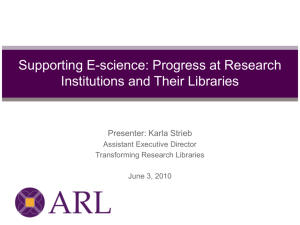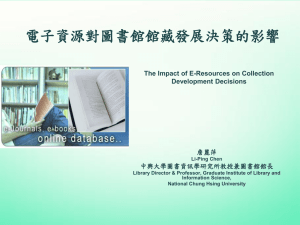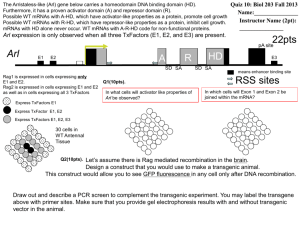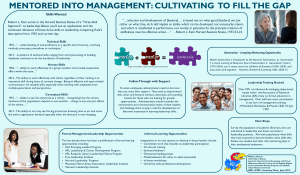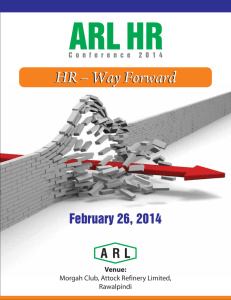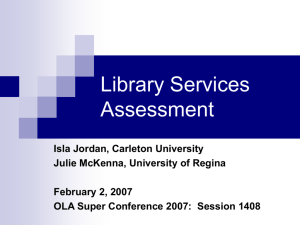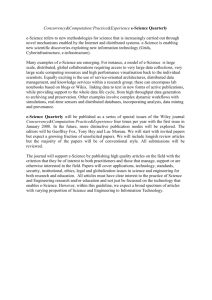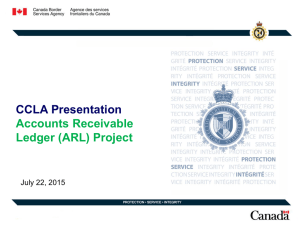ARL Survey on E-science and Data Support: Initial Findings
advertisement
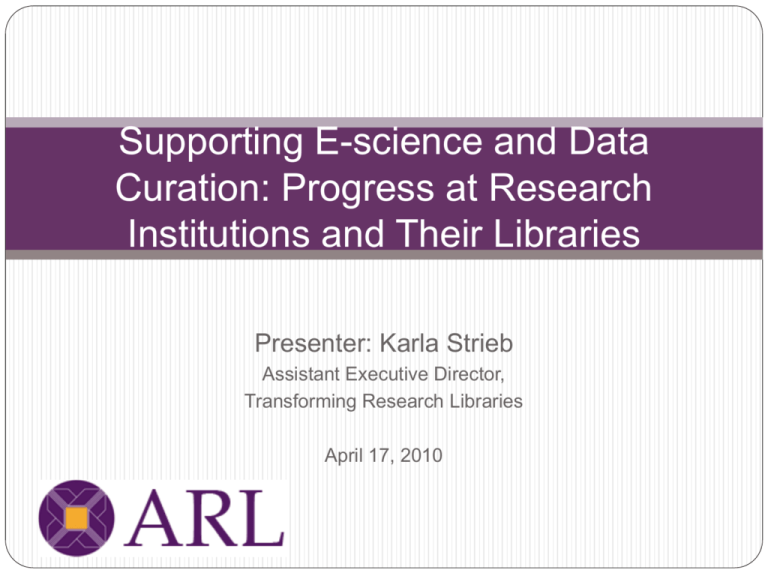
Supporting E-science and Data Curation: Progress at Research Institutions and Their Libraries Presenter: Karla Strieb Assistant Executive Director, Transforming Research Libraries April 17, 2010 ARL E-Science Activities 2006 Task Force created NSF Workshop: To Stand the Test of Time: Long-term Stewardship of Digital Data Sets in Science and Engineering (2006) http://www.arl.org/bm~doc/digdatarpt.pdf 2007 Task Force Report recommendations http://www.arl.org/bm~doc/ARL_EScience_final.pdf o Education, awareness o o o o Workforce development Relationships with relevant organizations Infrastructure development (CNI) Policy development, new publishing genre E-research engagement: The new paradigm Multi-institutional, international, collaborative context Data roles: planning, management, preservation, curation Well-integrated, sustainable models of support for research process ARL E-Science Activities 2008 ARL/CNI Forum, Reinventing Science Librarianship http://www.arl.org/resources/pubs/fallforumproceedings/forum 08proceedings.shtml Resources Talking Points http://www.arl.org/bm~doc/e-sciencetalking-points.pdf http://www.arl.org/rtl/eresearch/escience/ 2009-10 Working Group study of membership The ARL E-Science Survey Q: What is the status of institutional planning? Campus structures Infrastructure development Q: What is the status of library planning & engagement? Library role in campus planning Library services, infrastructure, capacity (staff) Pressure points, areas of interest Institutional organizing behavior A: Widespread engagement (61 respondents) Institutional infrastructure in place or planned at 77% Most institutions have hybrid of institution-wide and unit planning & infrastructure (60%) Only 9% are pursuing a purely institution-wide approach Institution-wide approaches include: IT, Library, faculty/researchers, Office of Research To centralize or decentralize? The answer is, Yes! Put someone in charge? Of those institutions with focused infrastructure 45% report designated unit to provide data curation support Create a “Data Center”? Centralized strategies “A cyberinfrastructure task force is in the planning stages, and it will report to the President of the University.” – U Oregon “Two groups exist: Cyberinfrastructure Council and Knowledge Management Committee. The Council is most involved in the high performance computing, data centers, other computing and network issues. The Knowledge Management Committee is more oriented to the content of escience and data curation…” – U Utah “The locus for planning and services around e-science issues at the U. of Washington is the UW eScience Institute, an interdisciplinary and institution-wide coordinating body” Decentralized themes “Most science and engineering departments, labs and centers…have some infrastructure to support high performance computing, or provide software tools to process/visualize research data. But none…are clearly documented on a single webpage or other place where researchers can easily locate.” - MIT “Currently there is no one central group or effort that focuses on overall planning, but a collection of overlapping initiatives and activities – This is largely because the university is highly decentralized and others in the institution do not think in terms of e-science but in terms of research supported by cyberinfrastructure.” - Purdue What’s happening with needs assessment? Examples gathered at: http://www.arl.org/rtl/eresearch/escien/esciensurvey/surveyr esearch.shtml#instdatres Are institutions getting grant funding? 19 institutions engaged in DataNet proposal development, most involved the library 14 libraries involved in other e-science grants (NIH, NSF, Mellon and Gates Foundations) Organization-level strategies for success Do your homework Find partners, coordinate, collaborate Balance centralized strategies with engaging with those who are ready now Work on grant funding as part of the picture Libraries are supporting e-Science Of libraries with institutional activity, 73% reported library involvement. Organization: group or group/department/ individual lead E-Research Working Group, Data Curation Working Group, e-Data Archiving Group, Science Data Services Team, Data Executive Group, E-Research Team 87% libraries offering service collaborate with other units (e.g., IT, colleges/departments, centers, Ofc. Research) What is the emerging library service portfolio? Finding, using available infrastructure 8 libraries maintain web site on services Finding relevant data, developing data management plans, rights management 8 libraries offer training in data management Metadata and archiving consultation/support How is the staff issue being addressed? Most (90%) rely on discipline librarians, many (66%) also have data librarians 64% reassigning existing staff 39% have hired e-science expertise 39% are planning to hire e-science expertise Who are these people? 65 positions detailed: Two named chairs 71% had library/info science degree 34% had disciplinary degree 17% had both library and other disciplinary degree Building teams on the service side to work with teams of researchers Pressure Points for ARL Libraries Organizational: Low recognition of importance of e-science support Turf issues Complexity of structures Pressure Points for ARL Libraries Resources: Staff with relevant expertise Technology infrastructure Budget constraints Learn more ARL page for the survey: http://www.arl.org/rtl/eresearch/escien/esciensurv ey/ Forthcoming report: May 2010
